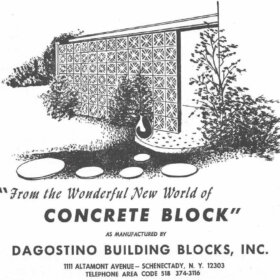
Individual concrete block units can be made to larger custom sizes and shapes, ensuring a quick turnaround in the construction cycle, with fewer joints mortar consumption rate reduces, as compared to standard masonry construction, enhancing the overall strength of the building.Ĭoncrete blocks are ideal for mass housing and various civil engineering projects, some of the few applications where concrete blocks excel are outdoor seating, decorative screens, flower beds, many outdoor furniture and patio designs, the formation of material bins, building walls. Construction with a concrete block is more systematic, faster, and stronger, as compared to brick masonry due to the large size of blocks. The difference between a concrete block and a brick is that a brick is a solid or hollow manufactured masonry unit made of concrete, clay, or stone, comparable to a concrete block that comes in hollow or solid formats but is exponentially larger, made of concrete, and are used mainly in load-bearing walls where strength is key. Concrete blocks protect the interiors of a structure against noise pollution, provide better thermal insulation, gives added protection against fire, and cuts down on plaster usage as an economically viable alternative to conventional bricks.

Mortar bags estimation = number of blocks needed / 33.Concrete blocks also referred to as concrete masonry units (CMUs) or cinder blocks are rectangular-shaped blocks used within the construction of walls as a primary building material. To calculate the number of such bags, you need to divide the number of blocks by 33.3: When it comes to estimating the mortar needed, a good rule of thumb is that three standard bags will typically cover 100 blocks. Then you need to calculate your concrete block costs just multiply the number of cinder blocks by the price per single block:Ĭoncrete block costs = price per block × number of blocks Number of blocks needed = wall area / block area To calculate the number of blocks, you need to divide the total area of the wall by the area of a single block: To do so, you need to multiply the wall's height and width: When calculating the number of blocks needed, the first thing to do is to calculate the size of your concrete block wall. If, after using our calculator, you're still thinking, "But how did they find out how many concrete blocks I need?", we are happy to walk you through the process! Please note, that this is a rough estimation, and you might need to calculate it separately using factors such as mortar type. On average, it takes three standard mortar bags to bond 100 concrete blocks together. Have a look at the mortar estimation field.Calculate the concrete blocks cost, which is done by inputting the price of a single block.In both cases, you will see the total number of concrete blocks needed for your project.

An illustration of a wall segment will appear to show exactly which dimensions are needed, to avoid confusion. If you pick custom size, you need to provide the calculator with the height and width of a single concrete block.All you need to do here is pick the size you want.
#Breeze block size free
Feel free to use our length converter if you want to know what they are in metric.


Decide whether you want to choose a preset block size, or input a custom one:.They are needed for determining the wall's square footage. Input the dimensions of the concrete block wall you're building, that is, its width and its height.To estimate everything your project needs, just follow these instructions: Our calculator is simple and intuitive to use.


 0 kommentar(er)
0 kommentar(er)
